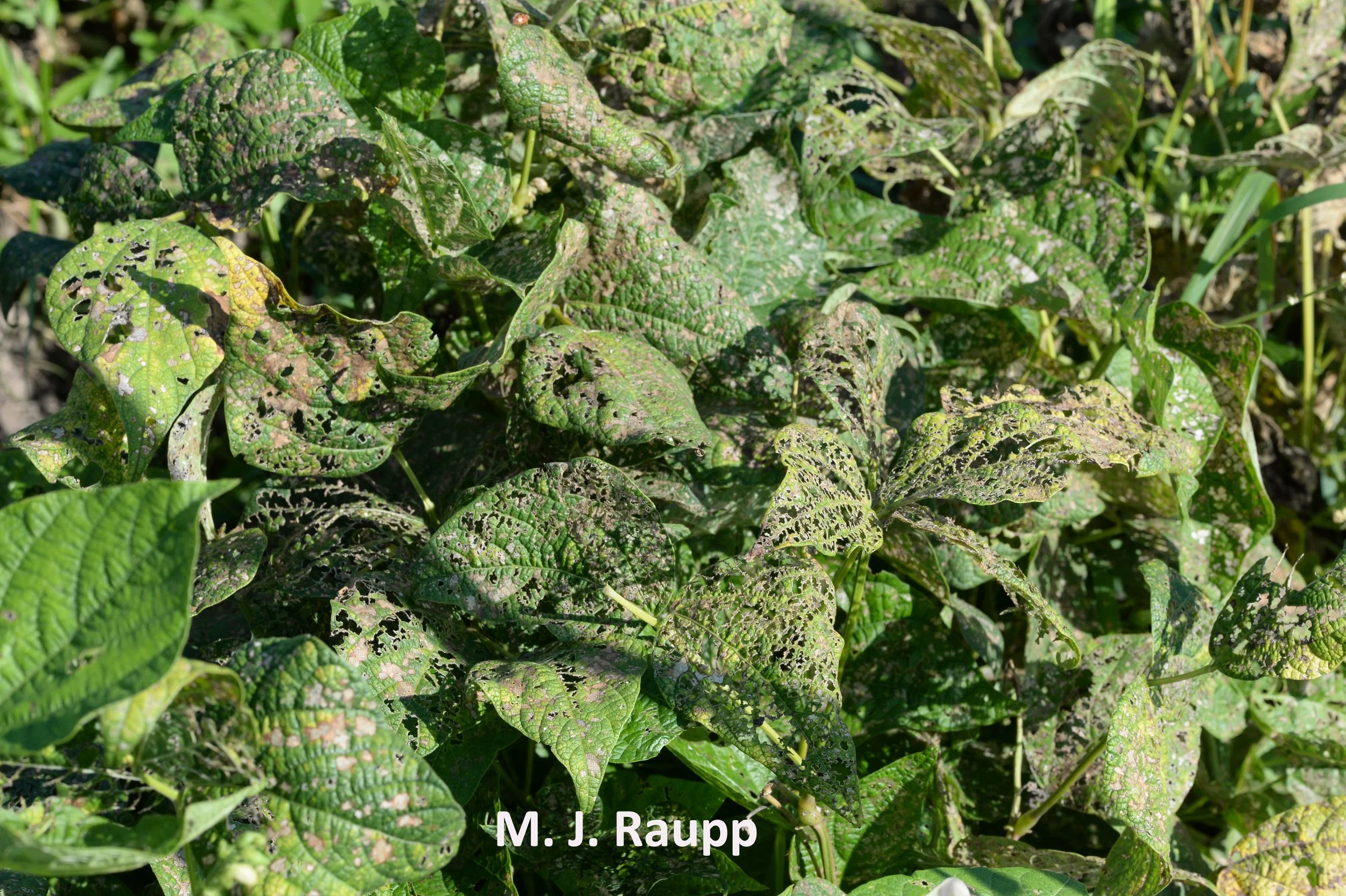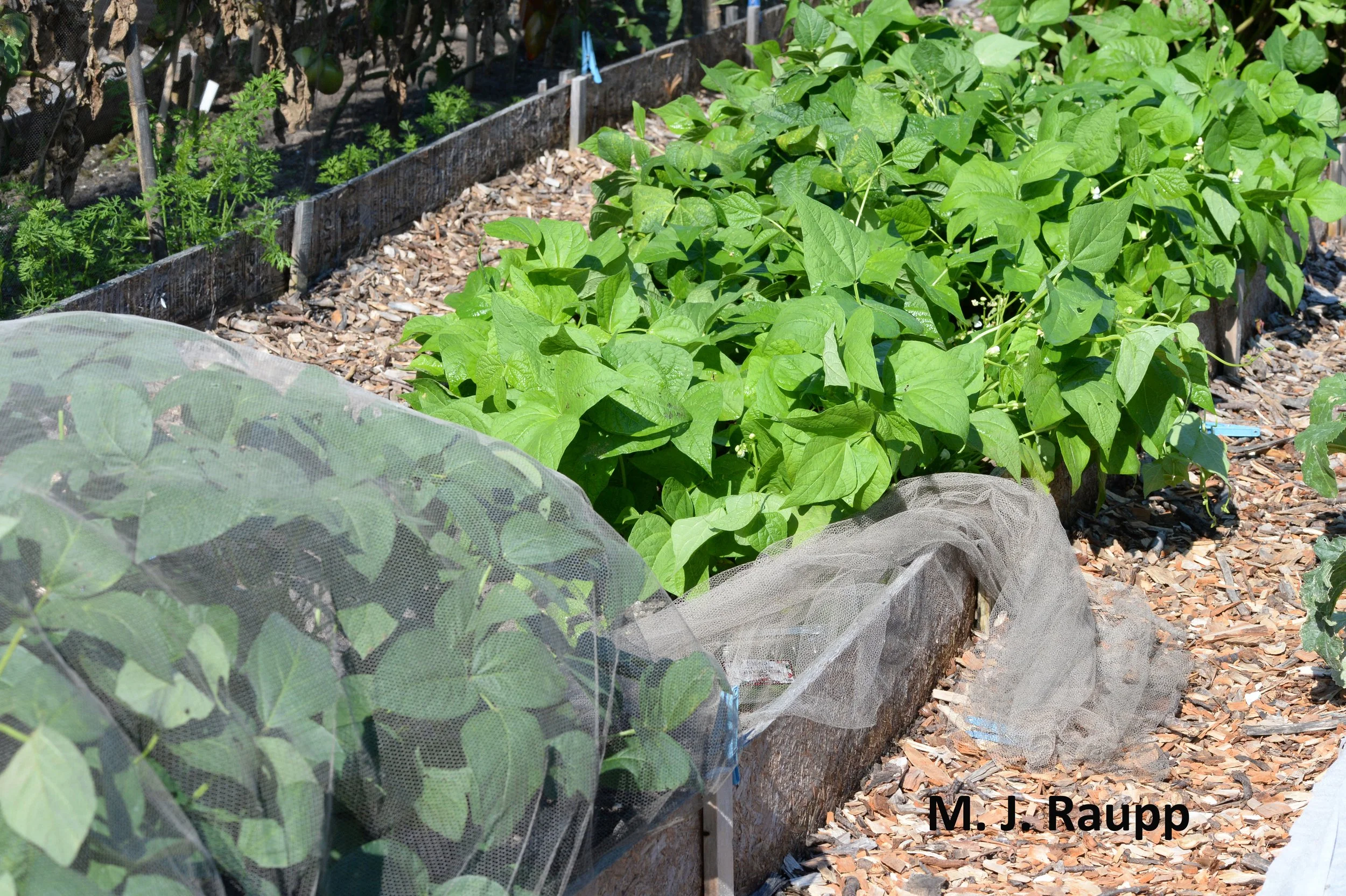Tiny jaws of Mexican bean beetle larvae and adults remove leaf tissue creating types of damage called etching and skeletonization. Raupp image
What’s not to like about lady beetles, right? Cute, sometimes brightly colored beetles helping to rid our gardens and landscapes of pests like crape myrtle bark scales and aphids. Well, sometimes they do invade our homes. But like many large families, part of the clan sometimes goes astray and lady beetles in the genus Epilachna evolved to eat plants rather than other insects.
The aboriginal home of the Mexican bean beetle is the high southern plateau of Mexico where many members of the bean plant family grow. As beans became widely cultivated in the United States, the Mexican bean beetle crossed the border and spread throughout the eastern half of the US where moist conditions and many types of cultivated beans favor its survival. In some years, Mexican bean beetles are relatively scarce due to depredations of a small parasitic wasp, Pediobius faveolatus, released decades ago in the mid-Atlantic region. However, in a local community garden, this year’s wet spring and warm summer seem to have provided the perfect growing conditions for the bean beetle.
A recent visit to the community garden revealed all sorts of beans in sad shape. This saga began back in spring when female Mexican bean beetles deposited scads of bright yellow eggs on undersides of bean leaves. From the eggs hatched spiny bright yellow larvae that scraped the epidermis from the leaf surface creating damage called etching. As larvae grew, their strong jaws chewed holes in the leaves. When larval development was completed, they formed pupae which dangled beneath bean leaves. From these pupae hungry adult beetles emerged and continued the impressive defoliation of the beans. One fool proof way to help reduce populations of beetles is to remove adults, larvae, and eggs from the beans when you find them.
Unprotected beans are devastated by Mexican bean beetle. Raupp image
As I meandered through the garden plots, almost every leaf of snap and lima beans was skeletonized by the feeding of the larvae and adults of this mini-jawed monster. Bristly, bright yellow larvae fed alone or in groups of 2 or 3. Orange and yellow adults with black spots scraped and munched the green tissue between the tougher veins of bean leaves. This nutritious food is converted into eggs and each female can produce as many as 600 eggs during the course of her lifetime. Laid by dozens, these bright yellow eggs hatch in about a week. Larvae complete development and form pupae, which hang suspended from the leaves of bean plants. As summer wanes, adult beetles seek shelter in decaying vegetation or leaf litter to survive the chill of winter. In spring, adults emerge from their refuge and move back to the bean fields to resume feeding and producing pestiferous spawn.
With the cover pulled back you can see how well floating row covers can protect beans from Mexican bean beetles. Raupp image
One way to reduce problems caused by these hungry bean-eaters is to remove plant refuse from the garden plot at the end of the growing season. Refuse relocation forces overwintering beetles to take a longer and more perilous journey to the garden from hibernal refuges. Some gardeners use floating row covers with a fine mesh to prevent beetles from reaching the bean leaves. These should be put in place early and kept in good repair. Another strategy to confound this pest is to plant a small “trap crop” of a favored food like snap beans in the garden early in the season. This early plot will attract and collect overwintering beetles as they emerge from their refuges. Once the beetles have moved in, the trap is set, and by annihilating the trap crop loaded with beetles, the number of beetles remaining to attack beans planted later in the growing season will be reduced.
When harassed by predators or entomologists, Mexican bean beetles release irritating chemicals that can turn your skin orange. Raupp image
Another method of control is a bit more direct and involves crushing eggs, larvae, and adults on the plants. Seems foolproof but be forewarned that fingers may turn orange after encountering defensive secretions produced by the beetles. And if you go the crushing route, please avoid the urge to lick your fingers, as the defensive secretions produced by the larvae and adults are a witches’ brew of noxious alkaloidal compounds that ward-off would-be predators. If you want to go the biological control route, the parasitic wasp Pediobius faveolatus may be available from commercial suppliers and released in your garden but be sure to follow directions as timing is critical for this method of intervention. While it may be a little late to save the beans this season, make a note of the health of your beans this year and consider your options for next year. Remember, beans are good.
References
Information used in preparing this Bug of the Week came from the marvelous article “The chemistry of phyletic dominance” by J. Meinwald and T. Eisner. Bug of the Week thanks community gardener Barbara for demonstrating the value of row covers.
More information on Mexican bean beetle and its management can be found at the following website: https://extension.umd.edu/resource/mexican-bean-beetle-vegetables/



